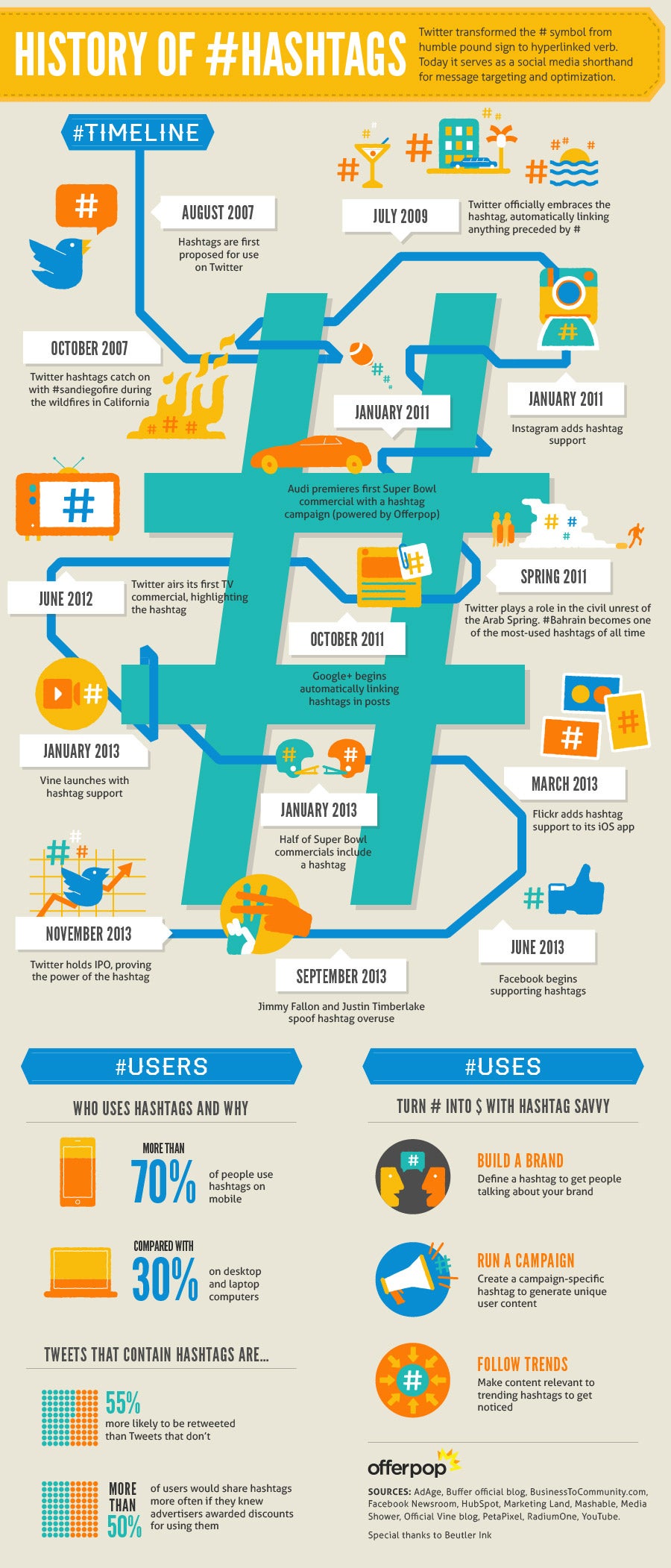The Hashtag: The Search Bar for the Social Web (Infographic) How the popularity of hashtags mirrors the rise of search in organizing and aggregating social media.
By David Bunker
Opinions expressed by Entrepreneur contributors are their own.
If there is anything that the growth of Google has taught us, it is this: the internet highly values organization, aggregation and search. It's still mind boggling that a simple search box and a back-end algorithm turned into one of the world's most dominant companies, valued now at more than $395 billion.
But when you think about it, it makes perfect sense. Before the search engine rush that resulted in Google's dominance, the internet was a scattered landscape of millions of pages that viewers had to hunt-and-peck through. After Google, through one simple search bar, every topic on the internet was at a person's fingertips.
Related: Why Brands Need to Shut Their Mouths and Open Their Ears
This history is repeating itself in the social media universe. The amount of data that streams through social sites is breathtaking. Every minute, Facebook users share more than 685,000 pieces of content, Twitter users shoot out 100,000 Tweets, and YouTube subscribers upload 48 hours of video, according to Mashable data.
Just like the early days of Google, social media users, brands and marketers are still trying to make sense of this torrent of social media information. And just like Google's simple search bar, one elegantly efficient solution is making that happen -- the hashtag. The simple pound sign is now used across social networks, making sense of a complex social media world fractured into multiple platforms and multiple media.
Using the hashtag, marketers can now aggregate social content and reach social users across Facebook, Twitter, Vine and Instagram with a single campaign.
It has also transformed the way that marketers tie social campaigns into their overall marketing strategy. Through a simple hashtag, brands can now collect, curate and aggregate user-generated content into cohesive social campaigns. And by putting a hashtag as a call-to-action in a traditional advertisement, social campaigns are now taking a central role in how brands execute and follow up on traditional advertising.
Related: 5 Ways to Harness Hashtags to Drive Business Value
Super Bowl advertising was perhaps the most visible example of this growing hashtag phenomenon. More than half of the ads used hashtags, and brands including RadioShack used hashtags such as #InWithTheNew to drive awareness about monumental business decisions -- a modernization and re-structuring of the company that will define the future of the electronics retailer.
The integration of a central hashtag in the campaign that announced a major new direction for the company caused Advertising Age, in a column following the Super Bowl, announce, "In Shocking Upset, RadioShack Wins the Super Bowl."
In many ways, hashtags mirror the rise of search engines. But in other ways they are the next evolution of discovery and aggregation for a social media world that is much more interactive, participatory and flexible.
The City of New York recently used a hashtag campaign called "#lovenyc" to get visitors and residents to post photos of New York City. The campaign's ability to harness entries from Facebook, Instagram and Twitter resulted in 3,000 officials entries, 11,000 uses of the hashtag "#lovenyc," 11,000 new email submissions and 4,600 new Facebook fans.
Social media is maturing. And hashtags are becoming a critical tool in organizing, aggregating and harnessing the millions of social conversations streaming across multiple networks. Just like Google grew from a search engine to an advertising vehicle, hashtags are maturing into a valuable tool for brands to not only disseminate their marketing messages, but listen to, and converse with, their consumers.
Related: 3 Big Milestones in the Development of Twitter 'Language'
Check out the history of the hashtag in the infographic below:Click to Enlarge+











